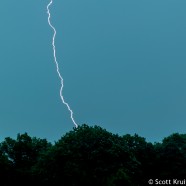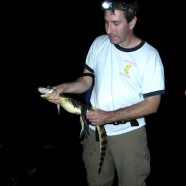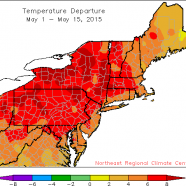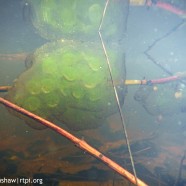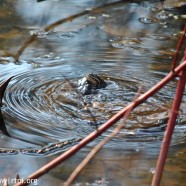Lightning Strike
There has been a lot of inclement weather lately! One good thing about all of the heavy rain and thunderstorms is that our waterways will be filled for reptiles, amphibians, odonates, and many other creatures. It may not make our work easier – for example, the Spiny Softshell Turtles are going to be a tough study for now – but it is certainly a far better fate than the droughts of places like California. Thankfully for them we have signs of a strengthening El Niño, the periodic warming of the Pacific Ocean’s surface temperatures, that may already be giving them slight...
Read MoreThe Migratory Connection
Join us at RTPI on Thursday, June 11 at 7:00PM for a free public event – The Migratory Connection: RTPI’s Tropical Conservation and Education Programs by RTPI President Twan Leenders. Find out where your favorite warblers and hummingbirds hang out when they are not in your backyard and be amazed by the other tropical birds they share their wintering grounds with. Meet some of the rarest frogs on our planet and see what RTPI is doing to help save them from extinction. Explore the exotic wildlife that calls the jungles of Costa Rica and Panama home – and see how some of it visits us on a...
Read MoreScorching May
The first half of the month of May 2015 was a quietly scorching one, with the heat turned all the way up in the Northeast. You may not believe it based on the outdoor feel of our day to day weather, but the entire region was far warmer than usual. While we did not have the extreme highs or actual heat waves, a stretch or days well into the 90s or anything particularly memorable, we have been consistently warmer than average for our highs and often above the long-term lows. The Northeast Regional Climate Center map here shows us the tale. The coolest part has been sections of Maine which were...
Read MoreBouncing Babies
Here we have some bouncing baby…umm, boys and girls I would guess. These spotted salamander (Ambystoma maculatum) babies will soon be hatching from their globular masses and become veracious predators in the little vernal pools in which they temporarily reside. As they feed and grow, they will be racing against the clock in order to develop from free swimming legless tadpoles into four legged land dwellers before their nursery pool dries out towards the end of the summer. Talk about rapid development! Elyse Henshaw Conservation Technician
Read MoreMale Competition
The Wood Frog (Rana sylvatica) is another early spring breeding amphibian common to our region. These explosive breeders utilize vernal pools, just like spotted salamanders, and their breeding activities are squeezed into just a few days. As the frogs enter the pools, males will take up their positions floating at the surface of the pool croaking their characteristic call. While they are calling, they will often joust with one another, especially if a female is nearby. These two males had a bit of a tousle, but both went on to call in another spot ready for females to come their way. Elyse...
Read More



